48V system will bring a revolution to the automotive industry
In the past year, the automotive industry has brought newer and more sophisticated high-end technologies. That is to say, under the impetus of these technologies, coupled with unprecedented strict emission regulations, the car's power supply has brought higher demand. It is under these factors that the 48V electronic system is spreading around the world like a wildfire in the automotive field. Some experts predict that by 2025, one-fifth of the cars sold will be equipped with 48V electronic systems, which will build a new grand blueprint. But we have to admit that the 48 system is not a new technology.
After an in-depth conversation with the relevant heads of Delphi and mainland China's two major auto suppliers, I had an in-depth understanding of how the 48V system works and why it is so popular. There are two main reasons: the first and most important is to meet the strict emission standards set by the government; the second is to make the car have more powerful power.
Increase power load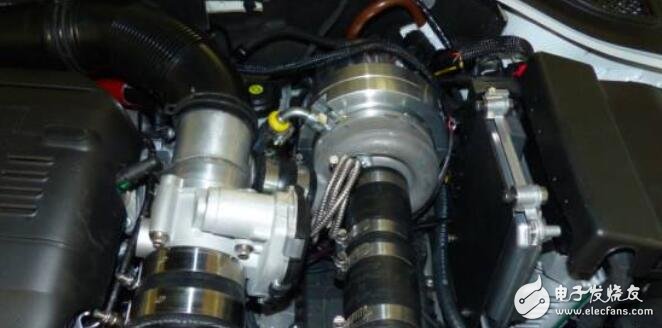
Delphi's 48V electric supercharger "E-charger"
In the past decade, automakers have replaced traditional mechanical parts with more and more high-tech, high-efficiency new technologies. Such as: electric power assist, electric brake vacuum pump and electric water pump. Then, automakers introduced a series of new technologies, such as infotainment systems, adaptive cruise control, lane departure warning systems and blind spot monitoring, to the car. Plus traditional seat heating, heated steering wheel and heated windshield.
In this environment, the standard 12V electronic system is becoming more and more stretched. So the 48V system was gradually put on the agenda to help meet the growing demand for cars. On luxury cars, this trend is becoming more and more obvious.
For example, Bentley Bentayga used a 48V battery to drive the electric anti-roll bar system for better control. Audi also used the same battery pack to power the electric booster.
Mary Gustanski, Delphi’s vice president of engineering, said the latter’s technology is a great help in improving the car’s ability to accelerate. The company's "E-charger" was applied to Honda's new Civic, allowing the car to significantly improve the start and stop of the car at very low engine speeds.
How does the 48V system work?Before we talk about the 48V system, we must first understand its concept.
The so-called 48V system refers to a low-cost fuel-saving technical solution jointly advocated by several German manufacturers of complete vehicles and components. The system is a low-hybrid system that can also be seen as an upgraded version of the start-stop system. The system voltage is 48V, replacing the traditional lead-acid battery with a power-type lithium-ion battery with less than one kilowatt of electricity, and replacing the conventional starter motor and generator with a BSG motor. It not only has an idle start and stop function, but also has engine shutdown, coasting and braking energy recovery, acceleration assist and electric cruise function. More importantly, the cost of bicycles will not exceed RMB 5,000.
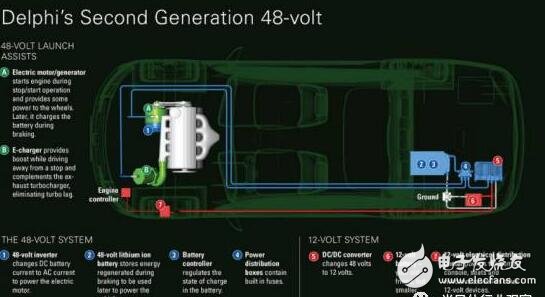
Although everyone is talking about the 48V system now, basically the lights, engine parts, and car entertainment information systems on our cars are all 12V systems.
But unlike the 1990s, where the industry wanted to completely replace it with a 42V system, this 48V system knowledge would be an important complement to 12V to explore a hybrid solution. In other words, the new motor and 48V battery are added to the traditional internal combustion engine and 12V battery as a powerful complement. This is similar to the system you are seeing now at GM BAS Hybrid, Buick LaCrosse and Saturn Aura.
Like the old GM powertrain, many new dual-voltage hybrid designs (like Renault Scenic's 48V system) include three main components: MGU (Motor Generator Unit), DC/DC converter and a high-voltage battery. . Here, the MGU can replace the traditional alternator driven by the front-end auxiliary machine, and the role of the DC/DC converter and the battery is also increasingly important.
That's it, making the implementation of the 48V system relatively cheap and easy. “This can achieve 50% to 70% of the revenue at 30% cost,†Gustanski said. This 50% to 70% increase can save 15% fuel, he continued.
The Continental Group also agrees with this view. They said they could also get 13% fuel savings in their initial NEDC environmental test, which is likely to reach 21% in real-world applications. This is very amazing.
Lithium-ion battery and DC/DC converter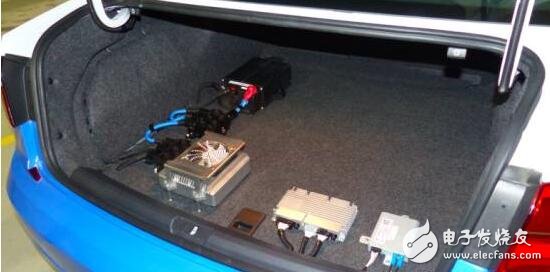
This is Delphi's prototype at CES this year, including batteries, DC/DC converters, fuses and battery controllers. They don't take up a lot of space. In practice, they are hidden.
The battery used in Delphi and the mainland's 48V system is a lithium battery unit. The size of the battery is only as large as the shoe box (black box in the picture above). This battery pack below 1Kwh transfers energy to a 12V lead-acid battery. Of course, this is achieved with the help of a DCDC converter (the above picture has a silver box with a fan). This is to reduce the voltage and meet the power supply requirements of the 12V equipment on the car.
Why do you need a big battery of 48V? Gustanski said that in the final analysis, it is the issue of efficiency and cost.
A 48V battery can support four times as much as a 12V battery, which means it can be used to power more devices at the same time. Examples include fans, electric boosters, pumps and compressors. In this case, the product can be made more efficient. In addition, this has greatly improved the size and weight of the electronic harness.
Gustanski also acknowledges that higher voltages have a greater impact.
Under the federal standards, in automotive electronic systems, if the voltage is higher than 60V (the official high voltage), it will bring a higher standard of shielding, conduit and connector requirements, which will inevitably bring greater costs. . Keeping the voltage below this voltage means that the cost of this mild hybrid system can stay between $800 and $1,200.
As Gustanski said, according to the "rule of thumb", there is an expectation that automakers will pay for the fuel-saving technology that MPG has received, that is, the cost that can be paid for every one percentage point increase is $50 to $100. This mild hybrid cost is exactly what is needed.
Motor generator set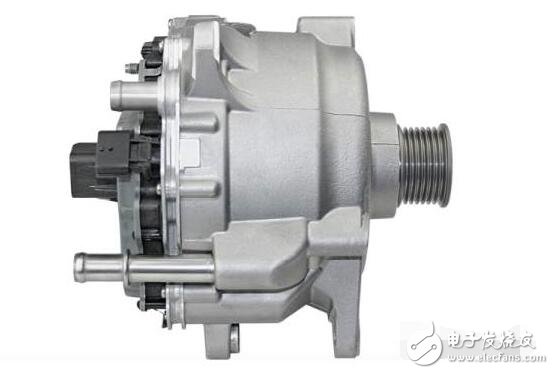
Like the alternator, the motor-generator set is connected to the crankshaft of the engine via a belt. This 48V unit is usually liquid cooled, so there will be a special tensioner to accommodate the fact that the crankshaft will be used by the MGU.
In the first example, a unit of about 10 kW is like a motor. With an inverter, it can draw current from a 48V lithium battery, which drives the motor. The motor transmits power to the gasoline or diesel engine through a conveyor belt and "ignites" it. This application can also quickly "ignite" the engine during start-stop (12V system requires a cold start), which can increase the torque by about 100, which improves the acceleration performance (especially during start-stop). Delivering the calculated torque pulse to the engine also reduces vibration during start-stop or reduces engine load and fuel consumption.
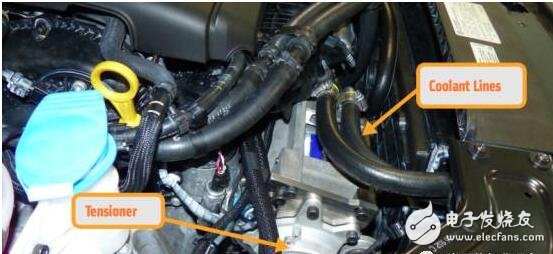
This unit not only acts as a motor, but also transmits torque to the crankshaft. As the name suggests, it is also a generator. After receiving the torque, it will again charge the 48V battery pack. This can be charged not only by the belt (like a conventional AC motor) when the engine is working. After the engine is turned off, it can also be charged while sliding and braking.
This means that the internal combustion engine can cut off the fuel supply, while the wheels can drive the internal combustion engine through a locked torque converter. The conveyor belt of the engine crankshaft then drives the unit, which also powers the 48V battery.
Therefore, this unit can not only start the car seamlessly when starting and stopping, but also perform the charging of the alternator. It is better to reduce the load on the engine by utilizing the torque on the crankshaft. Of course, this also allows for regenerative brakes.
Different levels of mild mixing systems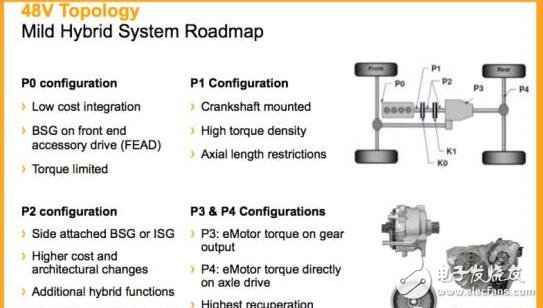
Delphi's Mary Gustanski told me that they need to focus on the MGU-driven mild hybrid system (collectively called the P0 Mild Hybrid System), but these low-cost systems are a shortcut for EVs, so their next goal is P2 system.
The so-called P2 system is as expensive as Mercedes-Benz's "Mercedes' inline starter generator" system. At the same time, its application will bring new changes to the car's internal design (such as the current motor-generator unit is between the engine and the conveyor belt), but also affect the clutch and other accessories. The goal of P2 is to allow the motor to directly supply kinetic energy to the wheels without the need for an engine. This can greatly improve efficiency.
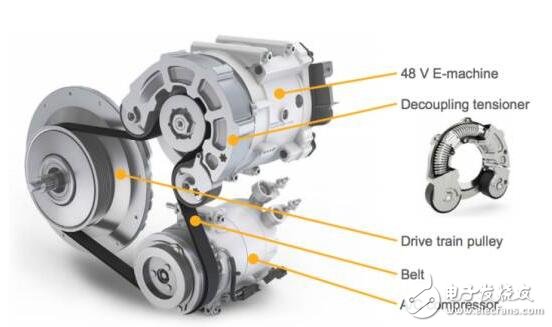
The Continental P2 system shown in the picture above has a powertrain between the engine and the shifting system. And separate the two accessories by two clutches. The MGU is placed on the other side to provide torque through the belt.
In order to provide kinetic energy only by electricity, rather than by driving an engine that is not running, the clutch on the engine side needs to be opened. The motor drives the transmission input shaft through the belt and power transmission pulley system.
When a start-stop is applied on a hot day, both clutches are opened, so that the unit can transmit kinetic energy to the air conditioner compressor without having to move the car or turn the engine.
Making space for P2 is an important task, and we will find that components of this system that are better than P0 systems will soon be loaded into cars around the world in different ways. This purely electric drive can also run the air conditioner when the engine is stopped, which will not only bring better fuel economy, but also a more comfortable experience.
Everything is for greater efficiency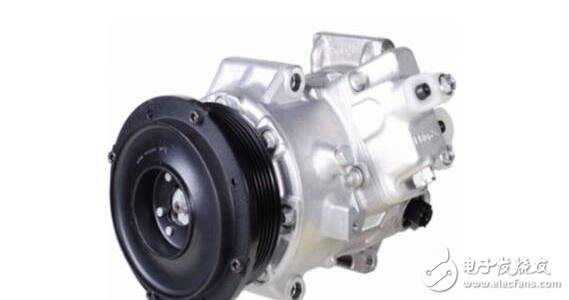
Continental and Delphi personnel told me that 48V systems are becoming more and more popular, mainly due to the following factors: that is to meet the fuel economy and carbon dioxide emission standards. Especially in Europe and China, these two points are particularly high. By 2020, the former will emit 95 grams of carbon dioxide per kilometer, while the latter will reach 117 grams of carbon dioxide per kilometer by 2021. The US's own MPG demand shows that by 2025, the carbon dioxide emissions per kilometer will be 101 grams.
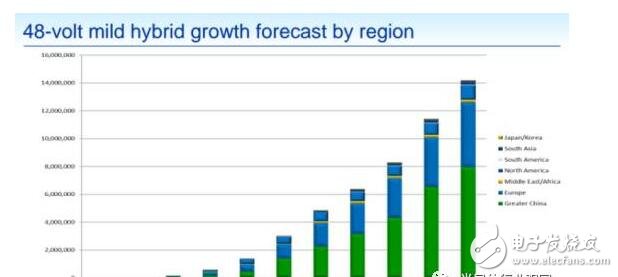
The replacement of the 12-generation system by the 48V system not only brings cost savings, but also the need for emission reduction. At the same time, the efficiency improvement brought by the pump and the fan at high pressure is also very obvious. More importantly, the 48V system can provide more power to meet the ever-increasing variety of automotive functions, while freeing up some of the smarter, engine-driven devices of the past.
For example, traditional pumps and air conditioners are the most obvious changes.
For example, in a cold winter, the car you drive is climbing at 4,000 rpm. In a traditional car, the engine-driven pump delivers a lot of coolant to the engine. But in fact, because the external environment is also very low, there is no need for coolant to help the engine cool down. So if we are using an electric water pump, this problem can be avoided.
Gustanski gave another example. When a car is speeding at a high speed on a high speed, if the air conditioner can be driven by electricity, there is no need for a high speed of the air conditioner compressor at such a high engine speed as in the case of a conventional car. In other words, the emergence of this new system will enable certain parts of the car to run on demand.
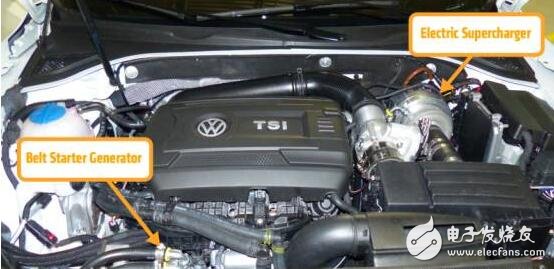
Gustanski even mentioned the use of a 48V diesel vehicle to rapidly heat the catalyst to reduce emissions.
There is no doubt that the 48V car system will become mainstream. The IHS report even shows that by 2025, the market capacity of 48V systems will increase nine-fold, when about 14 million cars will be introduced.
This is a good thing for suppliers like Delphi and the mainland. This is also a good thing for consumers. This not only brings a better fuel economy, but also brings more and better electronic experience. It also improves performance. Of course, the cost is reduced, which is a more direct advantage.
High Performance Speakers,Premium Universal Speaker Speaker,Professional Steel Speaker Horn,New Excellence Speaker Speaker
NINGBO RFUN AUDIO TECHNOLOGY CO.,LTD , https://www.mosensound.com